The buckwheat (Fagopyrum esculentum) is a plant belonging to the family of Polygonaceae. The common name suggests, erroneously, that it is a cereal, similar to wheat or wheat (genus Triticumfamily of Graminaceae). In reality, the botanical belonging to different families tells us that it is only the final use that buckwheat has in common with the classic wheat, with which it has substantial differences. The most important is that the flour made from buckwheat is naturally gluten-free and therefore suitable for people suffering from celiac disease.
It is a crop that boasts a long tradition in our country, unfortunately gradually abandoned in the second half of the last century. Today buckwheat is considered marginal in crop rotations and mostly it is imported from abroad, in particular, for the European market, from Russia and Ukraine.
However, this condition should be reviewed, as the plant is well suited to organic cultivation in the foothills, and can be integrated with beekeeping. It also offers a high quality food product and excellent commercial value. So let’s see everything there is to know about buckwheat, which is also an income opportunity in suitable areas.
Origin and diffusion of buckwheat
Buckwheat is native to Asia, in particular to an area of southwest China (today the world’s largest producer) and part of the eastern Himalayan region. From this area it spread to the European continent, according to historians probably following the Mongol and Turkish invasions (populations called “Saracens” at the time). In Italy the cultivation of this plant was initially concentrated above all in the Alpine areas, not very suitable for wheat. Later it also extended to some Apennine areas of central Italy, without however ever reaching large cultivated areas. To date, Italian production is insignificant, while imports are growing sharply and are around 20,000 tons per year. Therefore, another product of significant food importance, which could be produced locally giving value to Italian agriculture, is instead almost entirely imported from abroad.
Buckwheat description
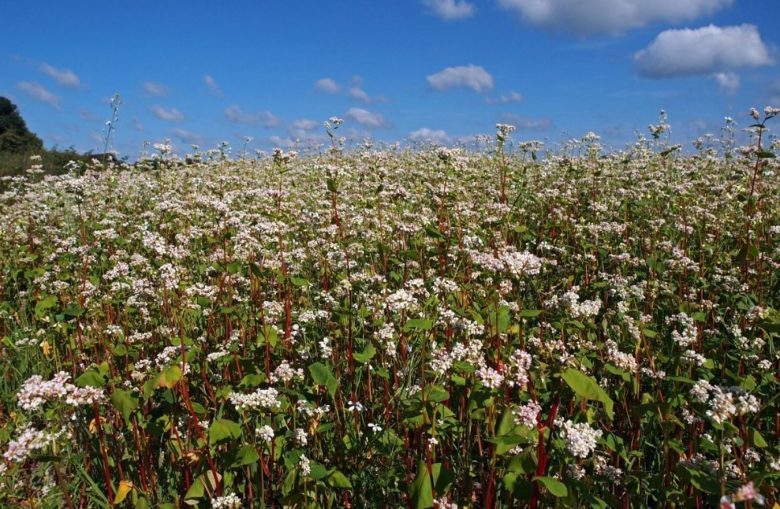
Buckwheat is an annual herbaceous plant, with a rather short crop cycle (60-100 days). The height it can reach is very variable, from 25 cm up to 2 m, although the varieties currently used in Europe vary from 60 to 120 cm, depending on the growing conditions. The plant develops a single stem, which branches out at the nodes. The greater the space available between one plant and another, the greater the branching of the stem.
The stems and branches have a glabrous surface, are hollow inside, of a more or less intense reddish color when ripe.
Poise
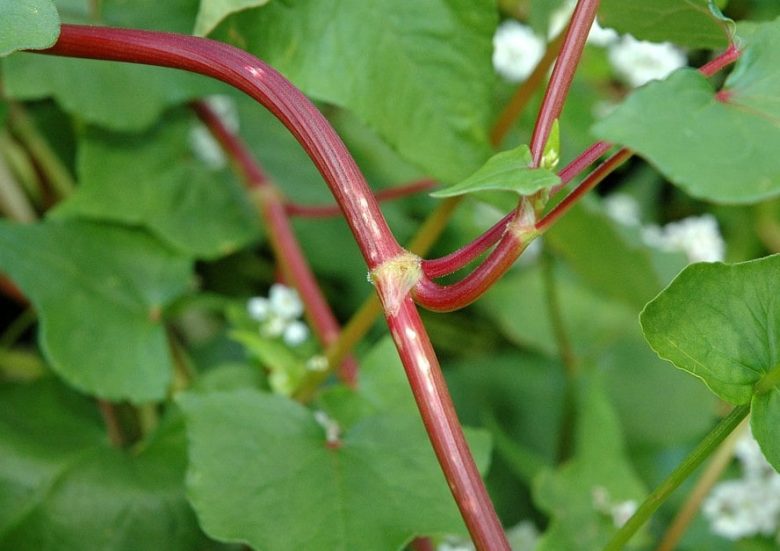
The posture of the stems is usually erect. However, an excessive density of sowing and excessive fertilization, push the plant upwards and, subsequently, cause entrapment (i.e. the stems will lie down on the ground), also because buckwheat, unlike simple wheat, has little ability to straighten the stem.
Root system
Buckwheat plants develop a taproot root system which, however, is not very extended both in depth and laterally. This represents a limit to cultivation, as the plant is sensitive to long dry periods during the vegetative cycle.
Leaves
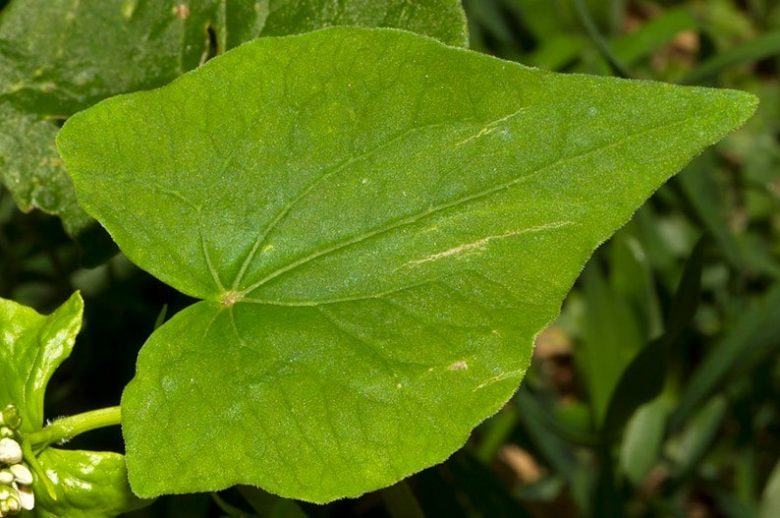
The leaves have a triangular shape with a spear-shaped tip. They measure 4-7cm in length and 3-6cm in width. They alternate on the stems and have a baby. This is as long as the lamina in the lower leaves, reduced almost to disappear in the upper ones.
Flowers
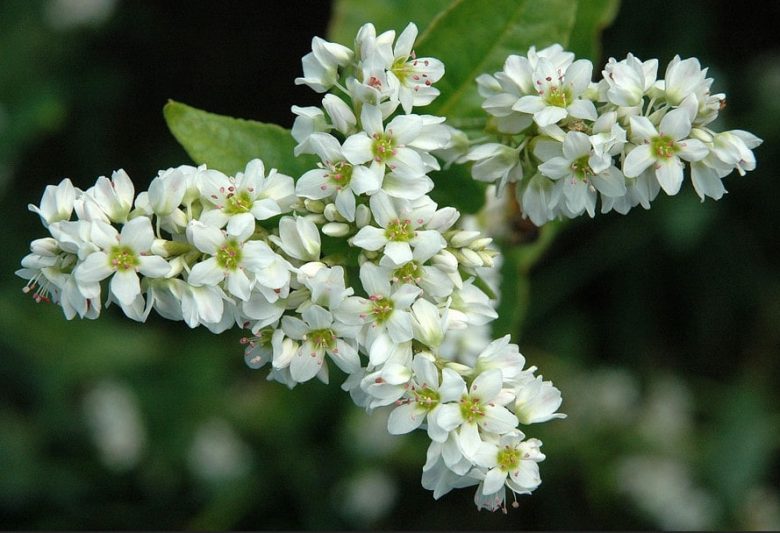
Buckwheat flowers are very particular, as they are of two types. We have in fact the long-styled flowers (pin flowers), with long styles and short stamens, and short-styled flowers (thrum flowers), with short styles and long stamens. Each plant produces only one type of flower, but all varieties have the two types of flower in an almost identical number. Both types pollinate and fertilize each other, with pollination taking place mainly by bees and other pollinating insects.
The flowers develop on dense terminal racemes, but also at the axil of the leaves. The color of the petals is white or pink depending on the cultivar.
Fruits and seeds
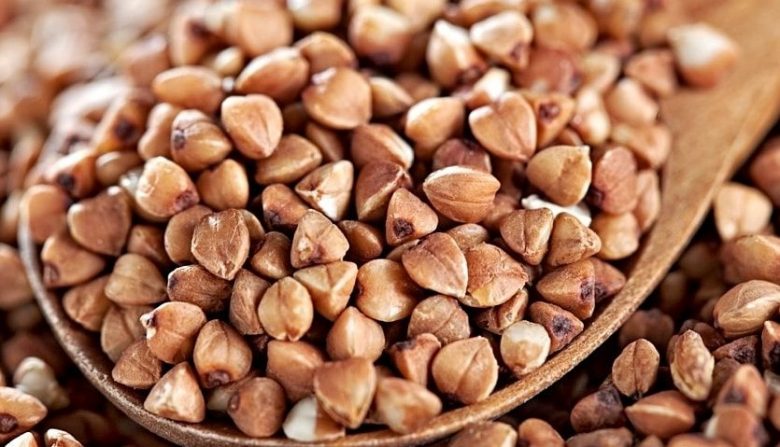
The fruit of buckwheat is a brownish-black achene with triangular section and acute apex. This achene tightly wraps the single seed within it. This in turn is covered with a pale green integument and contains the endosperm, rich in reserve substances (mainly starch), and the embryo.
Size and weight vary according to the cultivar.
The seed is obviously the useful part of the plant, from which the precious flour is obtained.
Buckwheat flowering and beekeeping
In our areas, buckwheat flowering occurs about 35-40 days after sowing, therefore in summer, at the beginning or at the end, depending on the sowing time.
This plant is to all intents and purposes a mellifera, with excellent average yields of honey per hectare cultivated. It has been observed that the strong presence of bees, and therefore of pollinators, improves buckwheat yields by up to 30-40%. This is because only a small percentage of flowers ultimately give rise to the fruit (seed). The fruit setting (therefore the yield) is very poor in the absence of bees, so much so that cultivation is not convenient.
Profitability
All this suggests that the cultivation of buckwheat and beekeeping (at least 2 hives per hectare, for good pollination) can go hand in hand and be integrated in the same farm, with obvious income advantages for the farmer / beekeeper. Bees also gather brown pollen on this plant.
Monoflora buckwheat honey is one of the most valuable and sought after on international markets, characterized by a typical dark color, intense aroma and bitter taste. It is a honey rich in vitamins, minerals and antioxidants, with beneficial effects on our immune system. If you want to taste it, you can find it here.
Variety of buckwheat
Before looking at how to grow buckwheat, let’s take a look at the current varietal landscape.
The Italian farmer must choose whether to carry on local varieties and ecotypes, or to turn to the foreign seed industry, where however, it must be said, that the genetic improvement work is more advanced.
Unfortunately, in Italy there are few ancient varieties that have survived the progressive abandonment of the crop, among these we mention: Teglio 92 And Teglio 94 coming from the homonymous municipality of Valtellina; Karnol, Six S, St. Leonhard And Villanders which instead come from various locations in South Tyrol.
Foreign buckwheat
At European level (and surroundings) the choice is wider, here is a list of the main varieties divided by country of origin:
- Russia: Kievskaya, She gives it, Lileja, Orbit, Orlovchanka, Selena And Life as classic varieties; while we have Shatilovskaya And Krasnosteetskaya as a large-seeded variety; Bolshevik 4, Iskra And Minchanka as tetraploids; Sumchanka as a variety with a definite development;
- Austria: Bamby;
- France: The Harpe And Saracen;
- Germany: Max;
- Poland: Emka, Hruszowska, Kora;
- Czech Republic: Pyra;
- Slovakia: Spacinska;
- Slovenia: Darina, Darja, Frog, Siva.
The cultivation of buckwheat
Buckwheat is a spring-summer crop. Considering the summer period, it prefers a mild climate, with a good temperature range between day and night, and a fair amount of water. Excessive heat during flowering is hardly tolerated.
It grows best on poor soils, the important thing is that they are free of water stagnation. At the level of pH, neutral soils are ideal, it also tolerates acidic ones well, but avoids excessively calcareous soils. Excessive vegetative growth occurs on overly fertile soils, causing poor fruit setting of the flowers and lodging of the stems. In practice, it does not require fertilization, which is why it is a perfect plant for organic cultivation. Given these basic conditions, the ideal environment for growing buckwheat is given by the mountain areas (from north to south), on the edge of the high hills (in the central-northern regions).
Crop rotation
Buckwheat is usually alternated with other crops, given the shortness of the crop cycle, in order to make the most of the land. For example, it can be sown after the harvest of a winter cereal (second harvest), thus obtaining two productions in the same year. The rye-buckwheat rotation was widespread in the Alpine valleys.
Soil preparation
The preparation of the soil for the cultivation of buckwheat does not require deep tillage, this is because, as we have seen, the root system of the plant is rather superficial. Usually, a superficial plowing (maximum 25 cm), to be carried out in the previous autumn or 30-40 days before sowing, is followed by a couple of harrowing at a distance of 7-10 days, in order to prepare a good seed bed and eliminate weeds mechanically (false seeding).
In very loose and eroded soils, plowing can be avoided and limited to harrowing or harrowing only work with the subsoiler.
The preparation of a good seedbed allows a quick emergence of the seed and, consequently, an optimal initial development of the crop without suffering the competition of weeds.
Sowing times
If buckwheat is the main crop, sowing should take place as early as possible, i.e. when the risk of late frosts is behind and the soil temperature is at least 8 ° C.
In Italy these conditions are reached in late spring, precisely from the end of April (low hills) to the end of May (high hills and mountains). In this case, the crop cycle lasts about 12 weeks.
If the buckwheat cultivation is a second crop, sowing takes place as soon as possible after the harvest of the previous crop, ie in July-August, depending on the climate. In this case, the crop cycle is completed in 9-10 weeks. When sowing in midsummer, irrigation is often necessary to encourage sprouting and initial growth.
Sowing techniques and intensity
The sowing of buckwheat is carried out with the mechanical seeder, with rows spaced 15-25 cm apart and at a depth of 3-5 cm. Alternatively, the direct broadcast sowing which is followed by a light harrowing to bury the seed.
The optimal sowing intensity is that from which 150-200 plants per square meter are born, which is obtained using 40-50 kg of seeds per hectare with mechanical sowing, or 60-70 kg per hectare with broadcast sowing.
Irrigation
Normally, buckwheat does not need artificial irrigation, as natural rainfall is sufficient. However, in recent years, even the hilly and mountain areas suffer long periods of summer drought, aggravated by the autumn-winter one. In this case, it is necessary to intervene with emergency irrigation, where possible, using sprinklers.
Diseases, pests and wildlife
Buckwheat stands out for being rustic, in fact it does not suffer from particular attacks by parasites or fungal diseases, another aspect that explains the “biological vocation” of the crop. The appearance of root rot is possible, but only when water stagnations form in the soil, which, therefore, must be absolutely avoided with a good hydraulic arrangement (drains, drainage, etc.) during the preparation of the soil.
More fearsome for buckwheat fields are wildlife raids. For example, mountain meadows are very attractive to wild ruminants, especially deer and roe deer. During the maturation phase of the seed, the attacks can come from birdscausing significant losses of grain ready for harvest.
Buckwheat harvesting
The last aspect to consider to close the buckwheat cultivation cycle is the harvest. It is usually done between September and October and presents some difficulties.
The flowering, and therefore the ripening of the seed, is gradual, so it is difficult to find an exact moment to harvest. Anticipating too much risks having too many immature achenes. Conversely, by delaying we risk losing part of the mature achenes that fall to the ground.
Ancient method
In ancient times, to overcome this problem, buckwheat was cut by hand in advance and gathered in bunches (called sheaves), which were left to mature for another 10-15 days. Once dried, the sheaves struggled to extract the seed.
Modern method
Today the harvest is carried out with the common combines with grain head, when most of the seeds are ripe and the plants have lost most of their leaves.
The combine proceeds slowly and with the threshing speed reduced to 1/3 of that used for threshing grain. The grain obtained in this way, however, has a high percentage of humidity and must be dried in the air or in artificial dryers, taking care not to exceed a temperature of 43 ° C.
To avoid the problem of humidity, some mow the field beforehand and, when the plants are dry, proceed to the passage with the combine harvester.
Yields
The productive yields of buckwheat vary from 5 to 15 quintals per hectare (with peaks of 20-25). The yield is higher in mountainous areas than in hilly areas.
By processing the grain, a yield of 70-75% buckwheat flour is obtained.
Nutritional aspects of buckwheat
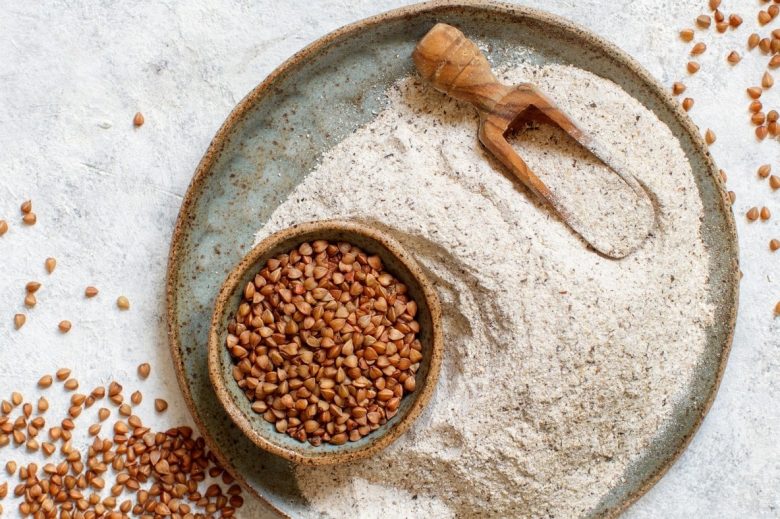
From buckwheat a flour with a high fiber content and a low glycemic index is obtained, suitable for the nutrition of diabetic people. From this point of view it is useful for the prevention of type 2 diabetes, thanks to the high content of chiro-inositol (a substance that increases the sensitivity of cells to insulin).
Numerous studies they then showed that the consumption of buckwheat is associated with a lower risk of developing hypercholesterolemia and hypertension, thanks to the presence of antioxidants, such as flavonoids, and in particular the glucoside rutin. Rutin also has the effect of protecting against radiation (from medical / electrical devices or radiotherapy).
Buckwheat flour also provides a good source of mineral salts, such as: magnesium, manganese, phosphorus and copper. Contains all eight essential amino acids, including lysine. Finally, being naturally gluten-free, it is an excellent food to be included in the diet of celiac people.
Contraindications
The only negative note is that buckwheat can have rather marked allergenic effects and therefore, in the case of children, it must be administered with care.
Uses
In our country, buckwheat is ground to obtain a flour with a characteristic light gray color, due to the presence of fragments of the dark pericarp. Cruschello is also obtained from the grinding, which can be left in the flour or separated, depending on whether you want to obtain wholemeal or sifted flour. With special equipment, the grain is dehusked and used for food preparations.
This flour cannot be baked on its own due to the absence of gluten. However, it is possible to produce excellent bread using up to 30% of buckwheat flour on the total and adding it to high quality bread-making wheat flour. The flour, alone or added to wheat or corn flour, can also be used for the production of fresh or dry pasta. Buckwheat flour, even 100%, is excellent for the preparation of desserts. The resulting products (biscuits, cakes, etc.) are darker in color and with a typical aroma.
The chaff
The chaff, or the shells of the achenes, is not edible, but is destined for non-uses
foodstuffs, such as the stuffing of pillows.
New forms of use of buckwheat
Lately, new forms of use of buckwheat are spreading, such as flakes for the preparation of porridge or for use in breakfast, puffed grain, and numerous other dishes and confectionery specialties. Another food use is given by fresh sprouts obtained from hulled seeds. Beer can also be obtained from this type of wheat, perfect for celiacs as it is gluten-free. In specialized stores you can find for sale many of the products just described.

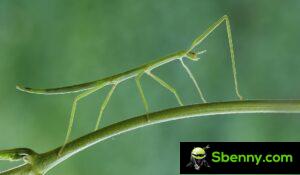
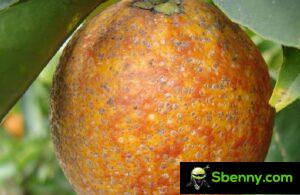
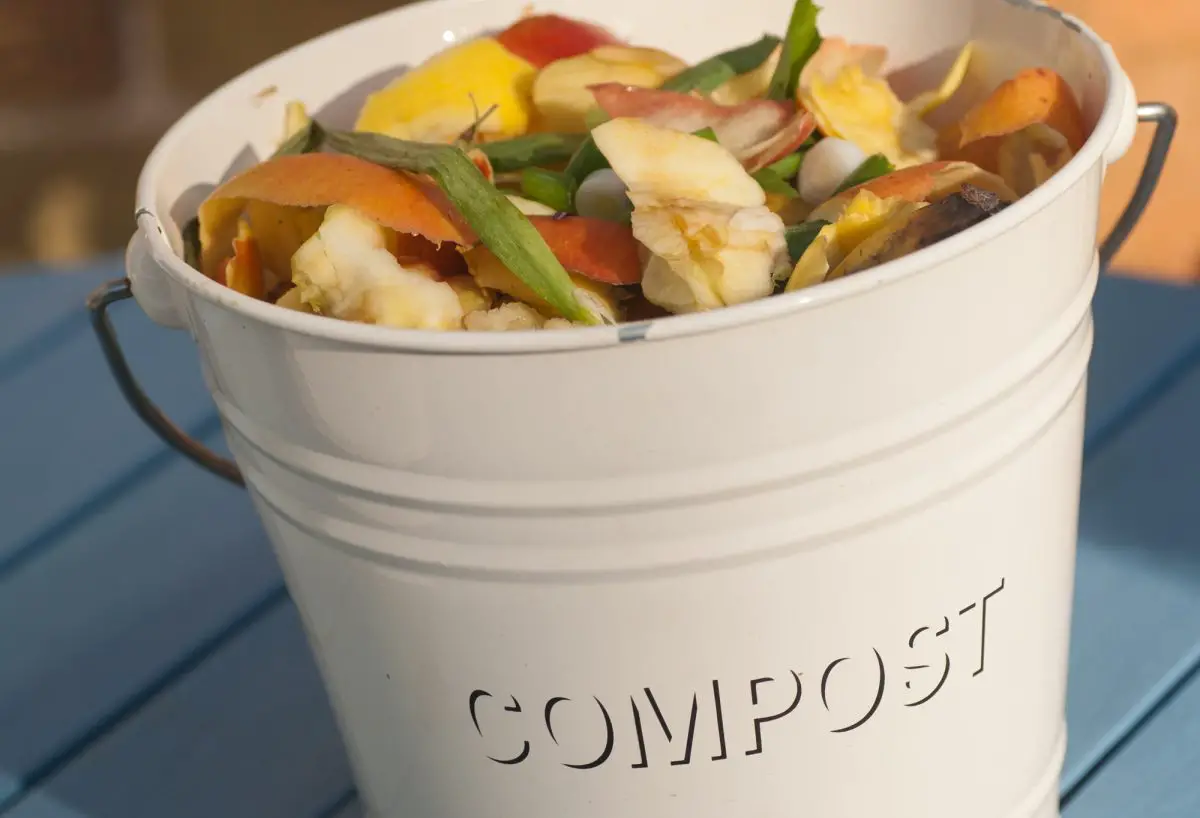
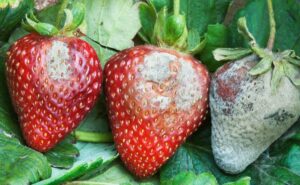
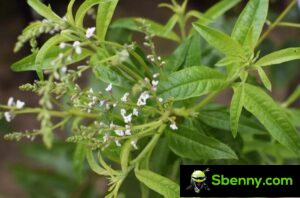
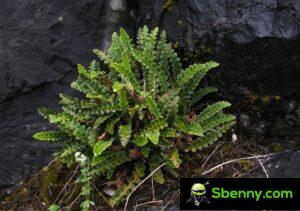
Start a new Thread